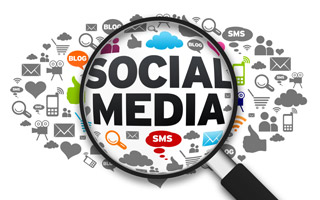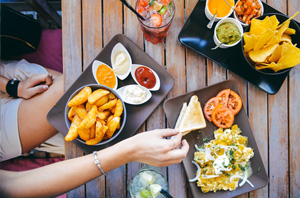There has been a push in the last several years for cafeterias to offer healthier food options. The U.S. Department of Agriculture, for example, passed new regulations in 2012 requiring more whole grains, fruits, and vegetables in school cafeterias.
However, once the food is there, it’s up to patrons to make healthy choices when building a plate. A cafeteria can make a few simple changes to encourage these healthier choices.
How can things like rearranging food options, adding labels and information about options, and offering trays with small dishes make such a difference?
Know Your Patrons
First, it’s important to remember who will be going through the line in your cafeteria. In a hospital, patrons might be of all ages, and children are likely to be accompanied by an adult. In a middle school, children are likely to make decisions about food selection on their own.
Children and adults are drawn to different kinds of food and different displays, so encouraging healthy eating is different, depending on your patrons.
For example, a tactic used by grocery stores to encourage purchasing certain products is to place them at eye level. For children, this means that healthier options should be near the lower shelves, while adults are more likely to notice them on the middle shelves.
Children are also more likely to react to more colorful foods, and those that are well designed. For example, placing a sample dish with healthy, colorful options, and making a face on the plate might encourage children to mimic the display.
Adults, on the other hand, are less likely to be influenced by the way the food is designed, and prefer fewer foods and colors on their plates. However, making healthy food attractive and easy to see will encourage adults to select these items. Fresh, quality fruits and vegetables are bright and colorful on their own, so simply placing them in a visible area can encourage adult patrons to choose them.
Use Small Plates
One of the biggest issues that leads to unhealthy eating choices is portion size. Small plates fill up faster than large ones, which can encourage patrons to eat smaller portions or to choose fewer selections, ultimately, leading to healthier eating choices.
Put Healthy Options in High Traffic Areas
When a hungry patron comes into a cafeteria, they are most likely to fill their plate with the first things they notice. Placing healthy foods, like fruits, vegetables, and whole grains, in a high traffic area like the entrance to the cafeteria will encourage more people to eat these foods.
Similarly, placing easy to grab health foods, like apples, bananas, or pears near the checkout counter – another high traffic area – is a great way to encourage patrons to select these items on their way out.
Add Labels and Descriptions
It is important to label all foods in a cafeteria, but the depth of the food descriptions can make a difference in whether or not the food is selected.
The name of the food should, of course, be the first thing on the label to help patrons recognize the food. The more descriptive the name, the more likely an adult patron is to select the food item.
Cafeterias that include health claims on food items may also find that those foods are selected more often, because the description encourages the patron to think about long term effects about what they’re eating now.
Offer Express Checkout
In public cafeterias, offering a healthy express checkout can be an incentive for patrons to fill their plates with healthy options. A checkout line may only serve patrons who are eating both fruits and vegetables, or who fill a certain portion of their plate with greens. Either way, this checkout line is reserved only for healthy eaters.
Food Presentation Can Lead to Healthier Selections in Cafeterias









